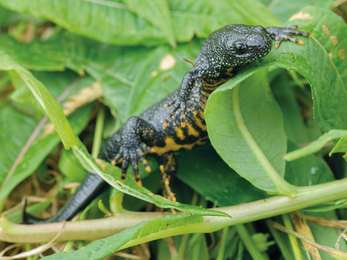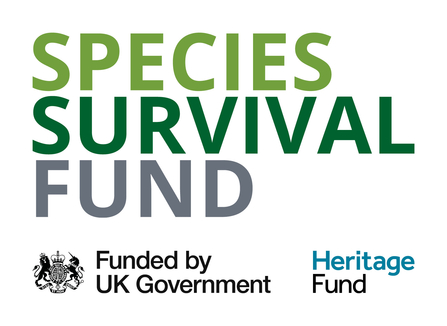November and December have been busy months for the one-acre meadow at Brooklands Farm nature reserve, located next to our headquarters. The meadow is one of our 18 reserves receiving money from the Species Survival Fund (SSF). The fund, developed by Defra and its Arm's-Length Bodies, is delivered by The National Lottery Heritage Fund in collaboration with Natural England and the Environment Agency. The funding is allowing us to focus on improving these nature reserves so they can become species rich biodiverse habitats that our wildlife needs to thrive.
We’ve been hard at work revitalising the pond at the bottom of the meadow. Our efforts began with the partial removal of the encroaching vegetation that was blocking sunlight from reaching the water's surface. Adequate sunlight is crucial for the pond's health; low light can hinder plant growth and disrupt temperature regulation. Tadpoles develop best in shallow, warm water, usually found along pond edges. However, without any shade, ponds can become too hot, leading to low oxygen levels and making the environment uninhabitable for many species.
It’s best to maintain at least one-quarter to one-third of the vegetation surrounding a wildlife pond, incorporating a variety of heights and species. This transitional area, known as the riparian zone, plays a vital role in supporting diverse wildlife. It offers safer access to the pond. The trees attract birds, while the tall grasses and shrubs provide habitats for reptiles and amphibians. Some of these species use the pond during their breeding season and then return to the nearby land for feeding and hibernation in the winter.
The brash and logs generated from the clearance will be used to create a hibernaculum—a man-made structure consisting of logs, rocks, and pipes, placed in a deep hole and covered with earth. These are great places for amphibians and reptiles to winter, as they hold the day's heat and slowly release it as it gets colder.
Our clearance has reduced the number of dominating species around the pond edge such as reedmace and willow. Doing so allows a variety of other less aggressive plant species to flourish, including marginals such as native water-forget-me-nots which are already present but need a helping hand to become more established. These forget-me-nots provide a great place for protected species like the great crested newt to lay their eggs and when in flower add a splash of colour to pond edges. This intervention is needed as back before humans changed our landscapes by parcelling up land with boundaries, wild ponds would have a diverse mix of wildlife coming to their edges to drink, feed, bathe and hunt. The large mammals visiting would trample and browse the vegetation maintaining open areas of the pond edge.
Since our offices are just a stone's throw away, this task gave our office-based colleagues a fantastic opportunity to get involved in some hands-on work. Helping them gain a better understanding of what our reserves teams do while also offering a refreshing break from their usual routine. Plus, it was a great chance for everyone to develop new skills and strengthen connections with colleagues they don’t often interact with.











